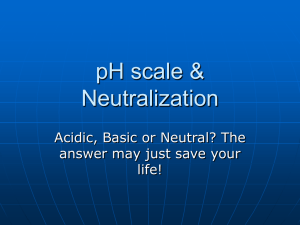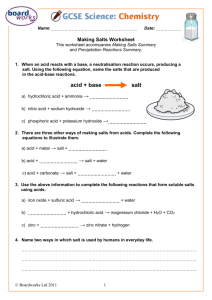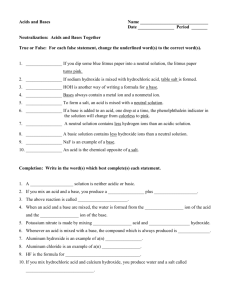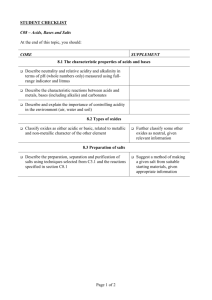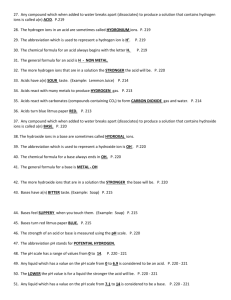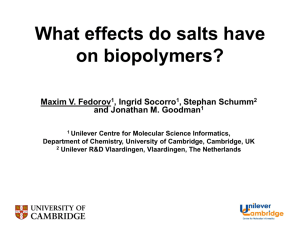chemistry_122-_19.5_0
advertisement
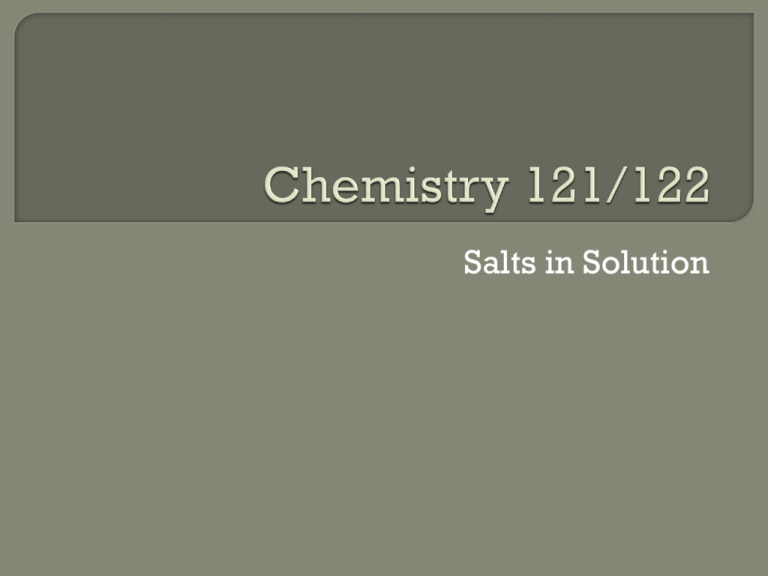
Salts in Solution Not all salts are neutral – some can be basic, others acidic When a strong acid reacts with a strong base, the equivalence point is neutral (pH = 7) • All of the H+ and OH- ionize – forming water and salt Some salts promote hydrolysis • The cation or the anion of the dissociated salt remove H+ ions or donate H+ to water As a result, the salt may be acidic or basic Form from a strong acid/weak base or a strong base/weak acid combination Salts that produce acidic solutions contain positive ions that release protons in water • Ex. Ammonium chloride (comes from hydrochloric acid and ammonia) Salts that produce basic solutions contain negative ions that attract protons from water • Ex. Sodium ethanoate (comes from ethanoic acid and sodium hydroxide) NaCH3COO → CH3COO- + Na+ CH3COO- + H2O → CH3COOH + OH1. sodium acetate is the salt of a weak acid and a strong base (there will be hydroxide ions in the dissociated solution) 2. Acetate assumes a negative charge once dissociated and therefore a Bronsted-Lowry base (hydrogen ion acceptor) 3. The acetate is available to combine with the hydrogen ions from water which will then produce an acid and hydroxide ions A hydrogen splits off of the water and attaches itself to the anion The resulting solution contains more hydroxide ions greater than the concentration of hydrogen ions Thus, the solution is basic Strong acid + strong base = neutral solution Strong acid + weak base = acidic solution Weak acid + strong base = basic solution 1. Write equations for the salt hydrolysis reactions that occur when the following salts are dissolved in water. Classify each solution as acidic, basic or neutral. a. ammonium nitrate b. rubidium acetate c. potassium sulfate d. calcium carbonate A solution in which the pH remains relatively constant when small amounts of acid or base are added A buffer is a weak solution of a weak acid and one of its salts, or a solution of a weak base and one of its salts All buffers have limits to their capabilities - this is called its buffer capacity Questions Guided 38, 39, 42, 43 – page 622 reading for the remainder of the chapter Test on Thursday, Dec. 12 Lab – Due Friday, Dec. 13

